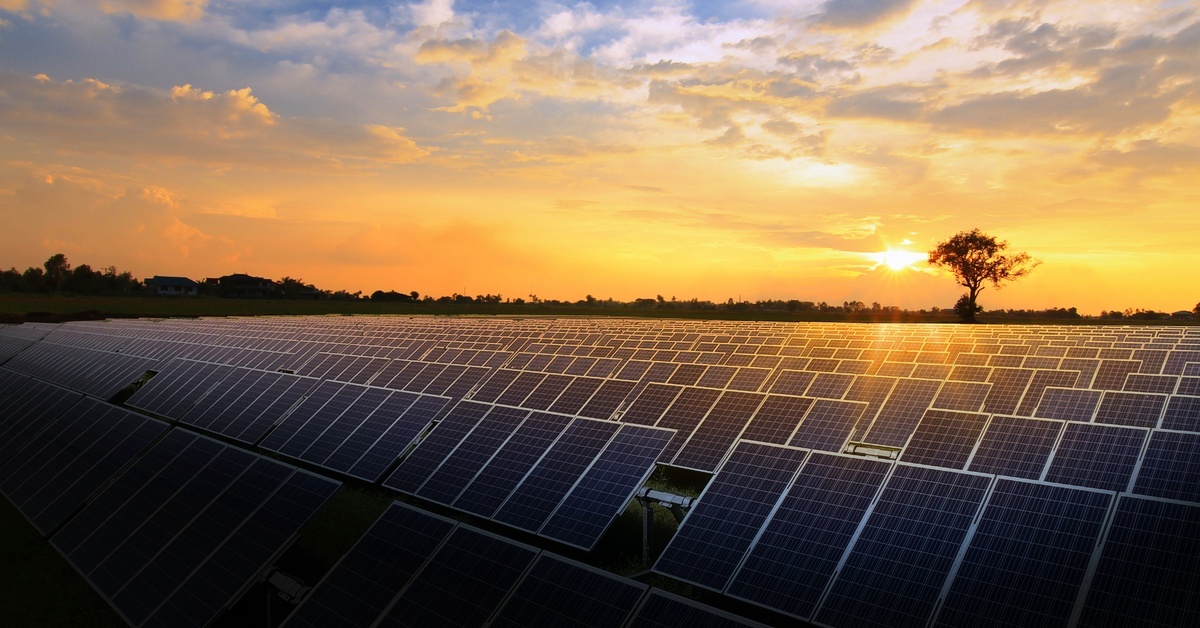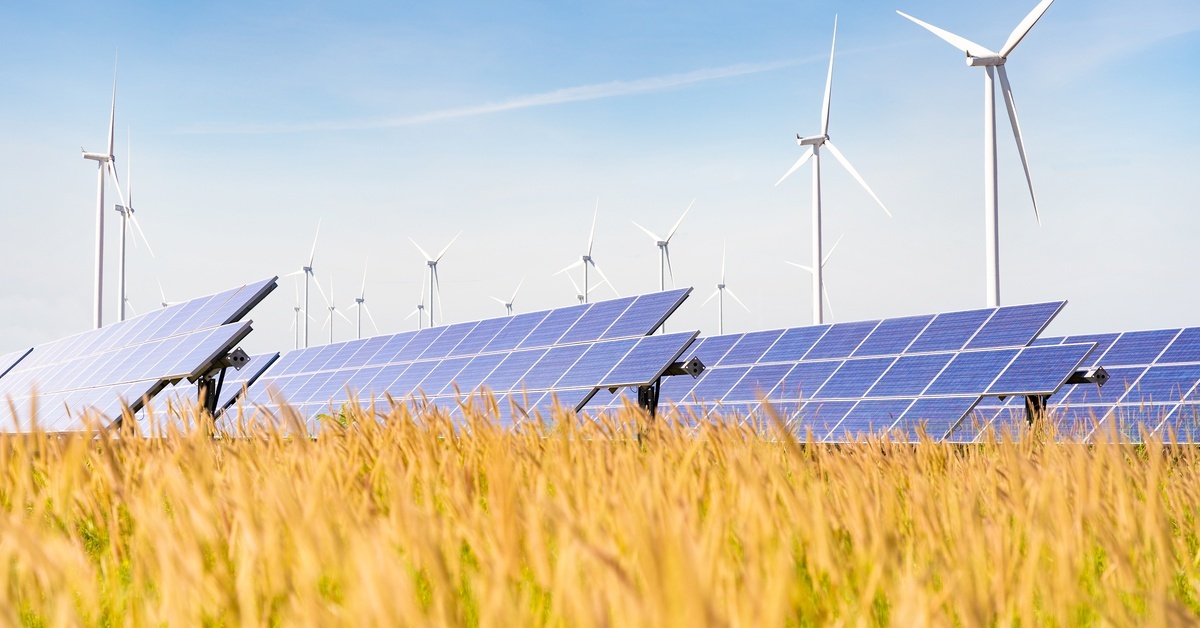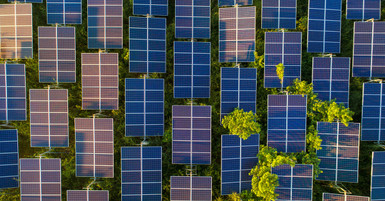Jul 8th 2025
The Role of Solar Energy Projects in Carbon Reduction
As the climate crisis intensifies, the global focus has shifted toward sustainable solutions, with solar energy emerging as a key player in this effort. Beyond the normal benefits of cost savings and energy independence with solar energy, these renewable projects can play a role in reducing carbon emissions and helping everyone transition to a cleaner, greener future.
Why Carbon Reduction Matters
Before we explore the role of solar energy, it’s important to understand why reducing carbon emissions is critical. Carbon dioxide (CO2) is one of the primary greenhouse gases responsible for global warming.
CO2 emissions from burning fossil fuels accounted for nearly 75% of global greenhouse gas emissions in 2021. As carbon continues to dominate the atmosphere's greenhouse gases, the consequences have become evident.
Rising global temperatures, frequent extreme weather events, and rising sea levels can all be attributed to increasing carbon emissions. Reducing carbon emissions isn’t just an environmental cause; it’s essential for economic stability, public health, and the preservation of ecosystems worldwide.
How Solar Energy Reduces Carbon Emissions
Solar energy stands as one of the most promising solutions to combat climate change. By harnessing the abundant and renewable power of the sun, we can significantly reduce our dependence on finite and polluting energy sources.
Replacing Fossil Fuels With Clean Energy
Solar energy eliminates the need for burning fossil fuels, which releases harmful CO2 into the atmosphere. A residential solar system can offset roughly 3–4 tons of carbon emissions per year. To put that into perspective, that’s similar to planting 100 trees every year.
On a larger scale, utility-scale solar farms generate massive amounts of clean electricity, helping power entire cities without contributing to pollution. A solar farm with 30 acres of space can produce enough energy to power 1,000 homes. If more energy organizations began to utilize these solar farms, fossil fuel use and CO2 levels in the atmosphere would drop.

Lowering Grid Dependency
Communities reliant on coal-fired power plants or natural gas can significantly reduce their emissions by switching to solar energy. Solar installations lessen the demand on traditional grids, cutting the carbon-intensive energy mix and replacing it with sustainable power sources.
Nations like Denmark, which generates nearly half of its electricity from renewables, have slashed their carbon emissions by 32%. Solar energy and other renewable options play a substantial role in achieving these milestones.
Key Types of Solar Projects Advancing Carbon Reduction
Solar energy projects come in various forms, each contributing uniquely to reducing carbon emissions and promoting sustainability. Utilizing these diverse pieces of solar technology can help fill the gaps in current fuel systems and build a brighter future.
Community Solar Farms
Community solar farms are a great alternative for individuals who lack suitable rooftops or the necessary funding for private solar panel systems. These farms provide shared access to solar power. Participants purchase shares in the project or subscribe to receive clean energy at reduced rates, making renewable energy more accessible and inclusive to everyone in the community.
Different states have passed legislation to encourage community solar in their communities. Even states without this legislation have community solar projects, with 44 states and localities having at least one of these solar projects.
Community solar projects in states like Colorado and Minnesota have collectively saved metric tons of CO2 emissions since 2017. Colorado was even the first state to enable community solar projects for its residents to utilize.
Commercial and Industrial Solar Projects
From factories to office campuses, solar projects in businesses are significantly cutting the carbon footprint of commercial activities. These projects not only reduce emissions but often slash operating expenses by providing predictable, low-cost energy. The upfront cost of solar panels may seem too expensive, but the overall energy output will make up for the expense.
California leads the United States in the number of commercial solar installations and energy generation. In 2023, the state produced 68,800 gigawatt-hours of energy, more than any other state. Other states, like Nevada, have begun to implement similar commercial projects that can help reduce the need for fossil fuels on a much larger scale.

Utility Scale Solar Farms
The largest solar projects that can be built are utility-scale solar farms. Utility companies are now spearheading large-scale solar projects capable of powering entire cities. Massive fields of panels generate gigawatts of electricity, ensuring a stable and clean supply for the grid.
These large, ground-mounted solar grids feed directly into the power grid. Unlike other options, utility companies sell the power generated from these solar farms through the power grid, rather than adding it to the fossil-fuel-powered grid.
Morocco has the largest utility-scale solar farm, the Noor Ouarzazate Concentrated Solar Power complex. This solar farm aims to generate 2,000 megawatts (or 2 gigawatts) of energy annually.
Economic Benefits of Solar Projects
One of the greatest advantages of solar energy projects is their dual-purpose impact on climate and the economy. Solar power not only curbs emissions but also stimulates investment and job creation across multiple sectors.
Every megawatt of solar energy that is installed for a project helps create five to seven full-time jobs. These occupations vary from engineering, installation, and maintenance positions that can benefit a variety of communities. By 2050, estimates suggest that renewable energy industries, such as solar, can generate 42 million jobs.
Money saving is another economic benefit of solar projects. The average utility-scale solar project saves $20 to $60 per MWh in health-related damages and climate benefits. By going solar, businesses and homeowners also reduce dependency on fossil fuel markets, stabilizing new energy costs and freeing funds for other priorities.
Join the Solar Movement
The solar boom isn’t slowing down anytime soon. Whether you're an individual looking to power your home sustainably or a business aiming to lower your carbon footprint, now is the perfect time to invest in solar projects. As these solar energy projects continue to expand, they also play a crucial role in helping the environment by reducing carbon emissions worldwide. Forget about fossil fuel systems; now, everyone can move forward with greener, more sustainable energy sources.
Solar projects work best with the proper solar PV labels. To find the best options for your solar project, come to Get Solar Labels. Our experts can help you adhere to industry standards and ensure clear and long-lasting communication for safety. Contact Get Solar Labels today and take the next step toward powering the future with confidence.

